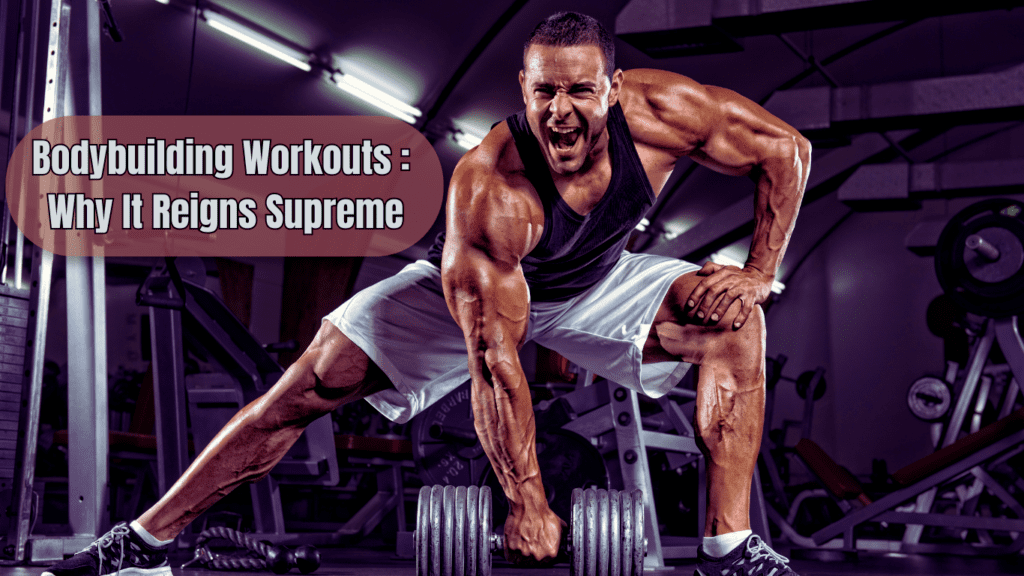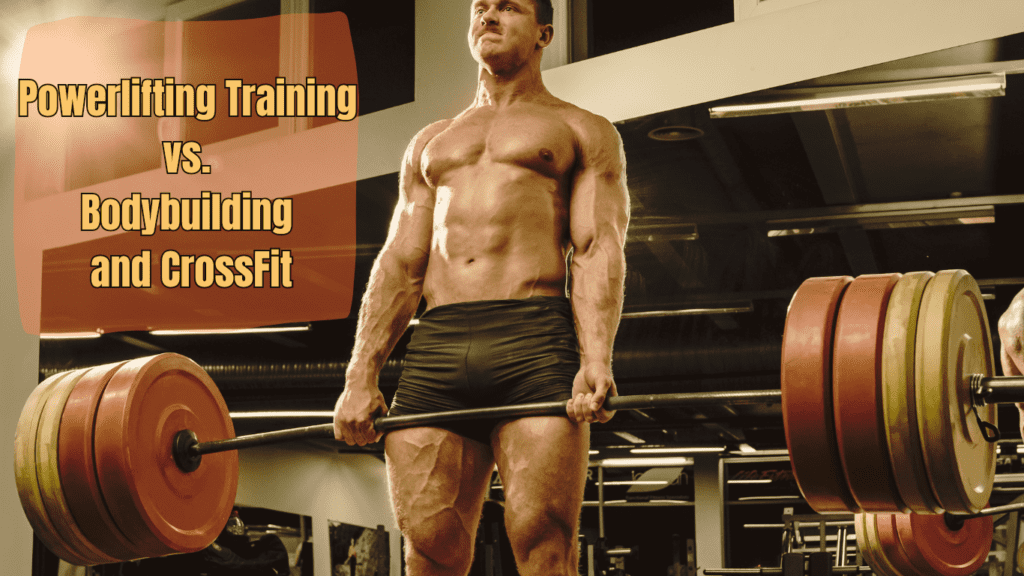Welcome to the World of Advanced Bodyweight Exercises
Picture yourself in a serene park, surrounded by lush greenery, with nothing but the sound of birds chirping and the rustle of leaves in the breeze. Now, envision yourself engaged in a workout that challenges every muscle in your body, sculpting your physique to perfection, all without a single piece of equipment in sight. Sounds intriguing? Welcome to the captivating world of advanced bodyweight exercises.
In a fitness landscape dominated by flashy gym equipment and high-tech gadgets, there’s something inherently appealing about the simplicity and effectiveness of bodyweight training. It’s a timeless practice that has stood the test of time, dating back to ancient civilizations where warriors honed their strength and agility through calisthenics and other bodyweight movements.
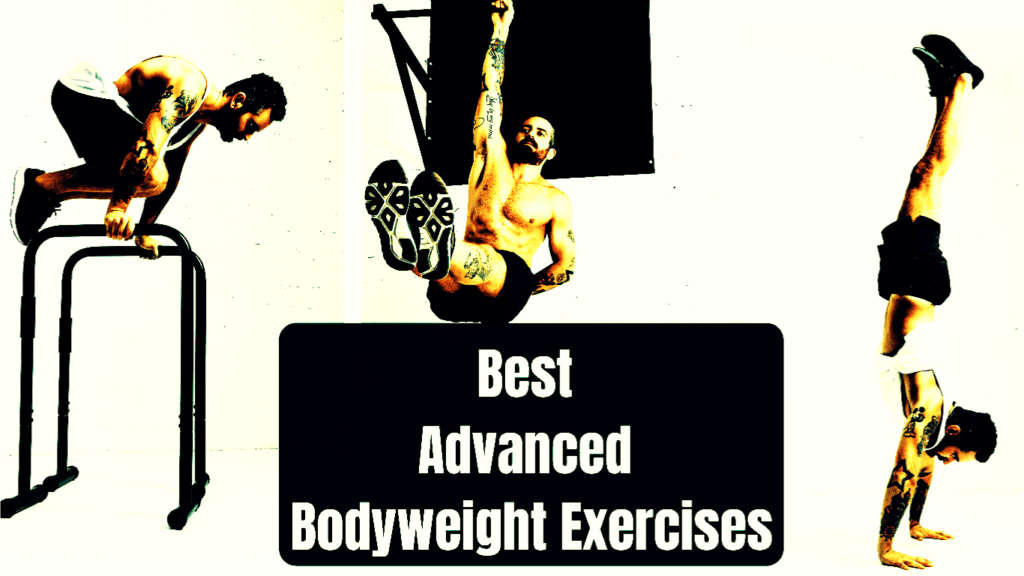
Today, bodyweight training has experienced a resurgence in popularity, and it’s not hard to see why. It offers a plethora of benefits that cater to individuals of all fitness levels and goals. From enhancing strength and muscle tone to improving flexibility and cardiovascular health, bodyweight exercises provide a holistic approach to fitness that transcends traditional gym workouts.
But what exactly are advanced bodyweight exercises? Simply put, they are movements that utilize your body’s weight as resistance to target specific muscle groups, without the need for external weights or machines. These exercises often require a higher level of strength, balance, and coordination compared to basic bodyweight movements, making them ideal for those looking to challenge themselves and break through fitness plateaus.
Subscribe And Get Our Free E-Book:Unlocking The Power Of Nutrition-Supplements, Substitutes, and Superfoods!
The purpose of this article is twofold: to celebrate the effectiveness and versatility of advanced bodyweight exercises, and to provide readers with a comprehensive guide to incorporating them into their fitness routine. Whether you’re a beginner eager to explore the world of bodyweight training or a seasoned fitness enthusiast looking to add variety and intensity to your workouts, this article aims to inspire and inform.
So why choose bodyweight training over traditional gym workouts? One of the biggest advantages is its accessibility. You don’t need fancy equipment or expensive gym memberships to get started—all you need is your body and a willingness to push yourself. This makes bodyweight training perfect for those who prefer to exercise at home, outdoors, or while traveling.
Additionally, bodyweight exercises are incredibly versatile and can be easily modified to suit your individual fitness level and goals. Whether you’re aiming to build muscle, improve endurance, or enhance athletic performance, there’s a bodyweight exercise to fit the bill. Plus, many advanced bodyweight exercises engage multiple muscle groups simultaneously, providing a more efficient and functional workout compared to isolated movements with weights.
Another key benefit of bodyweight training is its emphasis on functional fitness. Unlike traditional weightlifting exercises that isolate specific muscles, bodyweight movements often mimic natural, real-world movements, helping to improve overall athleticism and movement patterns. This translates to better performance in sports and daily activities, as well as a reduced risk of injury.
In the following sections of this article, we’ll explore some of the best advanced bodyweight exercises that target various muscle groups and provide step-by-step instructions on how to perform them correctly. Whether you’re looking to build strength, increase flexibility, or boost cardiovascular endurance, these exercises will challenge your body in new and exciting ways, helping you reach your fitness goals faster and more effectively. So let’s dive in and discover the limitless potential of advanced bodyweight training.
Exploring Progressive Bodyweight Training
Understanding advanced bodyweight training may seem like navigating through a maze of fitness jargon and terminology, but fear not! In this segment, we’ll unravel the intricacies of this dynamic form of exercise, shedding light on its definition, principles, and unparalleled benefits.
So, what exactly is advanced bodyweight training? At its core, it encompasses a diverse array of exercises that utilize the body’s weight as resistance to build strength, endurance, and flexibility. From classic movements like push-ups and squats to more complex maneuvers such as handstand push-ups and pistol squats, advanced bodyweight exercises offer a challenging yet rewarding path to fitness mastery.
The principles of advanced bodyweight training revolve around simplicity, functionality, and progression. Unlike traditional weightlifting, which often requires bulky equipment and intricate setups, bodyweight exercises rely solely on the body’s natural mechanics, making them accessible to all. Moreover, the versatility of bodyweight training allows for endless variations and modifications, ensuring that individuals of all fitness levels can find exercises suited to their needs and goals.
Progressive Overload Chart: From Beginner to Advanced Bodyweight Exercises
To help you better understand how to progress in your bodyweight training journey, we’ve created a detailed chart illustrating the progression from beginner to advanced exercises. This chart covers various exercise categories, targeted muscles, recommended sets and reps, execution tips, and progression strategies.
| Exercise Category | Exercise | Level | Targeted Muscles | Sets & Reps | Tips for Execution | Progression Tips |
|---|---|---|---|---|---|---|
| Core Strengtheners | Plank | Beginner | Abs, lower back, shoulders | 3 sets of 30 seconds | Keep body in a straight line, avoid sagging | Increase hold time or elevate feet |
| Side Plank | Intermediate | Obliques, shoulders | 3 sets of 20 seconds/side | Stack feet, keep hips lifted | Add leg lifts or extend hold time | |
| Dragon Flag | Advanced | Abs, hip flexors, lower back | 3 sets of 5-8 reps | Control descent, keep body rigid | Add ankle weights or increase reps | |
| Upper Body Blasters | Knee Push-ups | Beginner | Chest, triceps, shoulders | 3 sets of 10-12 reps | Maintain straight body from knees to head | Progress to standard push-ups |
| Standard Push-ups | Intermediate | Chest, triceps, shoulders | 3 sets of 12-15 reps | Keep elbows close to body, straight back | Increase reps or elevate feet for decline push-ups | |
| One-arm Push-ups | Advanced | Chest, triceps, shoulders, core | 3 sets of 5-8 reps/side | Spread legs wide for balance, controlled movement | Use a support for balance, progress to no support | |
| Lower Body Builders | Assisted Squats | Beginner | Quads, hamstrings, glutes | 3 sets of 15-20 reps | Use a chair or TRX for support | Reduce assistance over time |
| Standard Squats | Intermediate | Quads, hamstrings, glutes | 3 sets of 15-20 reps | Keep knees behind toes, straight back | Add jump for plyometric squats or hold weight | |
| Pistol Squats | Advanced | Quads, hamstrings, glutes, core | 3 sets of 6-8 reps/side | Lower slowly, use a support if needed | Hold weight or perform on an unstable surface | |
| Full Body Dynamism | Burpee without Jump | Beginner | Full body (focus on legs, core) | 3 sets of 10-12 reps | Maintain steady pace, ensure full plank | Add jump upon standing |
| Standard Burpee | Intermediate | Full body (focus on legs, core, arms) | 3 sets of 12-15 reps | Explosive jump, proper plank form | Add a push-up or a tuck jump | |
| Burpee Pull-up | Advanced | Full body (focus on legs, core, back, arms) | 3 sets of 8-10 reps | Explosive pull-up at the top | Add a clap at the top of the pull-up or a muscle-up | |
| Muscle-up | Advanced | Back, shoulders, chest, triceps | 3 sets of 4-6 reps | Generate momentum from hips, control descent | Use bands for assistance, increase reps | |
| Core Intensive | Hanging Leg Raises | Intermediate | Lower abs, hip flexors | 3 sets of 10-12 reps | Avoid swinging, lift legs with control | Progress to straight leg raises |
| L-sit Progressions | Advanced | Abs, hip flexors, triceps | 3 sets of 10-15 seconds | Keep legs parallel to the ground, straight arms | Elevate hands or hold longer | |
| Functional Movements | Bulgarian Split Squats | Intermediate | Quads, glutes, hamstrings | 3 sets of 12-15 reps/side | Keep front knee aligned with ankle, straight back | Add weight or elevate front foot |
| Shrimp Squat | Advanced | Quads, hamstrings, glutes, core | 3 sets of 6-8 reps/side | Use support for balance, lower with control | Perform without support or add weight |
Now that you have a clear understanding of how to progress through different levels of bodyweight exercises, let’s dive into the detailed descriptions of each exercise, including their specific benefits and how to perform them correctly.
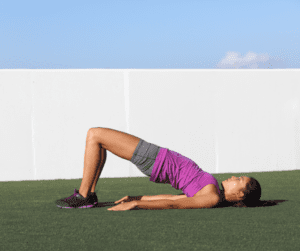
Detailed Descriptions and Execution Tips:
- Plank: Begin on your forearms and toes, keeping your body in a straight line from head to heels. Engage your core and hold for the prescribed time. Avoid letting your hips sag or rise.
- Side Plank: Lie on your side with your feet stacked. Lift your body onto your forearm and the side of your foot, creating a straight line. Hold for the prescribed time on each side.
- Dragon Flag: Lie on a bench, grip the edge behind your head, and lift your legs and lower back off the bench. Lower slowly, maintaining a straight body, then raise back up.
- Knee Push-ups: Start in a plank position with knees on the ground. Lower your chest to the ground, keeping your body straight from knees to head, then push back up.
- Standard Push-ups: Begin in a plank position. Lower your body until your chest nearly touches the ground, then push back up, keeping your elbows close to your body.
- One-arm Push-ups: From a push-up position, shift your weight to one arm with the other hand behind your back. Lower yourself slowly and push back up, maintaining balance.
- Assisted Squats: Use a chair or TRX for support. Perform a squat by lowering your body until your thighs are parallel to the ground, then return to standing.
- Standard Squats: Stand with feet shoulder-width apart. Lower your body by bending your knees until thighs are parallel to the ground, then return to standing.
- Pistol Squats: Stand on one leg with the other extended in front. Lower yourself into a squat on one leg, keeping the extended leg off the ground, then stand back up.
- Burpee without Jump: From standing, squat down, place hands on the ground, and jump back into a plank. Jump feet back towards hands and stand up.
- Standard Burpee: From standing, squat down, place hands on the ground, jump back into a plank, perform a push-up, jump feet back towards hands, and explosively jump up.
- Burpee Pull-up: Perform a burpee, and instead of just standing up, jump up to grab a pull-up bar and perform a pull-up.
- Muscle-up: Hang from a bar, pull yourself up explosively, and transition from a pull-up into a dip over the bar.
- Hanging Leg Raises: Hang from a bar, lift your legs straight up towards your chest, and lower them back down with control.
- L-sit Progressions: Sit on the ground with legs extended, hands beside hips. Lift your body off the ground, keeping legs straight and parallel to the ground.
- Bulgarian Split Squats: Place one foot behind on a bench and the other in front. Lower into a lunge, keeping the front knee aligned with the ankle, then return to standing.
- Shrimp Squat: Stand on one leg with the other leg bent behind you, holding the ankle. Lower into a squat while bringing the bent leg towards the ground, then return to standing.
Additional Notes:
- Warm-Up and Cool-Down: Always start with a dynamic warm-up and finish with a cool-down and stretching to prevent injuries and enhance recovery.
- Consistency and Patience: Progression in bodyweight training requires time and consistent effort. Celebrate small milestones and improvements.
- Listen to Your Body: Avoid pushing through pain. If an exercise feels too challenging, step back to an easier variation to ensure proper form and prevent injuries.
One of the most significant advantages of advanced bodyweight training lies in its ability to provide a full-body workout with minimal equipment and space requirements. Unlike traditional weightlifting, which often isolates specific muscle groups, bodyweight exercises engage multiple muscle groups simultaneously, resulting in more efficient and functional workouts. Additionally, bodyweight training promotes greater neuromuscular coordination and stability, translating to improved performance in sports and daily activities.
Safety precautions and proper form are paramount when engaging in advanced bodyweight exercises. While bodyweight training may seem less intimidating than lifting heavy weights, it still carries risks if not performed correctly. It’s essential to start with exercises that match your current fitness level and gradually progress as your strength and proficiency improve. Additionally, paying attention to proper alignment and technique can help prevent injuries and maximize the effectiveness of each movement.
Compared to traditional weightlifting, advanced bodyweight training offers several distinct advantages. Firstly, it requires minimal equipment, making it accessible to individuals of all backgrounds and fitness levels. Whether you’re working out at home, in a park, or on the go, bodyweight exercises allow for unparalleled flexibility and convenience. Moreover, bodyweight training promotes functional fitness by mimicking real-world movements, resulting in greater overall athleticism and injury resilience.
Furthermore, advanced bodyweight exercises offer endless opportunities for progression and customization. As you master basic movements, you can gradually advance to more challenging variations, such as one-arm push-ups or single-leg squats, to continue challenging your body and stimulating muscle growth. This progressive overload is essential for continued improvement and adaptation, ensuring that you never plateau in your fitness journey.
In conclusion, advanced bodyweight training is a dynamic and versatile approach to fitness that offers numerous benefits compared to traditional weightlifting. By understanding its principles, practicing proper form, and prioritizing safety, you can harness the full potential of bodyweight exercises to achieve your fitness goals and unlock your true strength. So, embrace the simplicity and effectiveness of advanced bodyweight training, and embark on a journey of self-discovery and transformation like never before.
100 Advanced Bodyweight Exercises Video
Advanced Bodyweight Exercises: A Comprehensive Guide to Strengthening Every Muscle Group
In this segment, we’ll delve into a variety of exercises designed to target different muscle groups, starting with core strengtheners.
First up, let’s explore the formidable Dragon Flags. This exercise, popularized by legendary martial artist Bruce Lee, is renowned for its ability to sculpt a rock-solid core. To perform a Dragon Flag, lie on a bench or sturdy surface with your hands gripping the edge behind your head. Lift your legs and lower body off the bench, keeping your entire body straight, then slowly lower your legs towards the ground before raising them back up. Dragon Flags not only strengthen the abdominal muscles but also improve stability and control throughout the entire body.
Next, we have Hanging Leg Raises, a challenging exercise that targets the lower abs and hip flexors. Hang from a pull-up bar with an overhand grip, then lift your legs towards your chest while keeping them straight. Lower them back down with control, being mindful not to swing or use momentum. For beginners, bent knee variations can provide a less intense option, while advanced practitioners can experiment with straight leg raises or variations with added twists for increased difficulty.
Moving on to Plank Variations, these exercises are renowned for their ability to build core strength and stability. Side planks, plank with leg lift, and reverse planks are all excellent choices for engaging the entire core and improving posture. Side planks target the obliques and lateral muscles, while plank with leg lift challenges balance and coordination. Reverse planks strengthen the posterior chain and help alleviate lower back pain. Incorporating these variations into your routine will enhance core strength and endurance, leading to better performance in all aspects of fitness.
Transitioning to Upper Body Blasters, let’s explore One-arm Push-ups. This advanced variation of the classic push-up requires exceptional strength and stability. Start in a standard push-up position, then shift your weight to one arm while keeping the other hand behind your back. Lower your chest towards the ground, then push back up to the starting position. Progression strategies include elevating the hand on a block or using a resistance band for assistance. Common mistakes to avoid include flaring the elbow and sagging the hips, so focus on maintaining proper form throughout each rep.
Another challenging upper body exercise is the Archer Pull-up. This movement targets the lats, biceps, and upper back muscles while promoting unilateral strength and stability. To perform an Archer Pull-up, grip the pull-up bar with one hand in front of you and the other hand extended to the side. Pull yourself up towards the hand gripping the bar while simultaneously straightening the arm on the other side. Alternate sides with each rep to ensure balanced development and avoid overloading one side.
Now, let’s explore the king of upper body strength exercises: Handstand Push-ups. Building up to Handstand Push-ups requires a solid foundation of shoulder strength, stability, and balance. Start by mastering the handstand against a wall, then gradually lower yourself into a controlled descent, aiming to bring your head towards the ground before pressing back up. Modifications include pike push-ups and elevated handstand push-ups to gradually build strength and confidence. Handstand Push-ups not only build impressive upper body strength but also improve shoulder mobility and stability, making them a valuable addition to any advanced bodyweight training routine.
Transitioning to Lower Body Builders, we begin with Pistol Squats. This unilateral exercise targets the quads, hamstrings, glutes, and core, making it a highly effective lower body strengthener. To perform a Pistol Squat, stand on one leg with the other leg extended in front of you, then lower yourself into a deep squat while keeping the extended leg off the ground. Use a support such as a TRX strap or bench for assistance if needed, and focus on maintaining balance and control throughout the movement. Progression methods include adding weight or performing variations such as the shrimp squat to continue challenging the lower body.
Next up, we have Bulgarian Split Squats, a unilateral exercise that hones in on the quads, hamstrings, and glutes while improving balance and stability. To perform a Bulgarian Split Squat, stand facing away from a bench or elevated surface with one foot resting on it and the other foot planted firmly on the ground. Lower yourself into a deep lunge position, keeping your front knee aligned with your ankle and your back knee hovering just above the ground. Return to the starting position by driving through the heel of the front foot. Variations include adding weight or elevating the front foot for increased range of motion.
Rounding out our lower body exercises is the Shrimp Squat, a challenging movement that targets the quads, hamstrings, and glutes while improving mobility and balance. To perform a Shrimp Squat, stand on one leg with the other foot lifted off the ground behind you, then lower yourself into a deep squat while simultaneously bringing the lifted foot towards your glutes. Use a support such as a TRX strap or wall for assistance if needed, and focus on maintaining proper form throughout each rep. Alternative options include performing eccentric-only or partial range of motion reps to gradually build strength and proficiency.
Transitioning to Full Body Dynamism exercises, let’s explore Burpee Variations. These explosive movements combine strength, power, and cardiovascular endurance for a comprehensive full-body workout. Incorporating plyometrics such as jump squats or tuck jumps adds an extra challenge and increases calorie burn, while adding complexity with variations such as burpee pull-ups or burpee box jumps keeps the workout fresh and engaging. Whether you’re looking to torch calories, improve athletic performance, or simply break a sweat, Burpee Variations are a versatile and effective option for full-body conditioning.
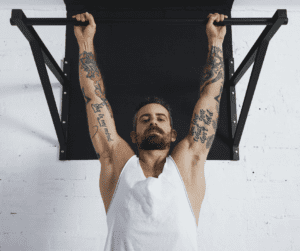
Next, we have L-sit Progressions, a core-intensive exercise that challenges stability and balance while building exceptional core strength. Start by sitting on the ground with your legs extended in front of you and your hands placed beside your hips. Lift your body off the ground, keeping your legs straight and parallel to the ground, and hold this position for as long as possible. Progression methods include elevating the hands on parallettes or performing tuck L-sits to decrease leverage. L-sit Progressions are an excellent choice for developing core strength and improving overall athleticism.
Rounding out our full body exercises is the Muscle-up, a dynamic movement that combines the pulling strength of a pull-up with the pushing strength of a dip. To perform a Muscle-up, start by hanging from a pull-up bar with an overhand grip, then explosively pull yourself up towards the bar while simultaneously transitioning into a dip at the top of the movement. Focus on generating momentum from the hips and engaging the lats and chest to complete the transition smoothly. Enhancing technique and strength through pull-up and dip variations will help build the foundation for achieving the elusive Muscle-up, making it a highly coveted skill in the world of advanced bodyweight training.
These advanced bodyweight exercises offer a diverse and effective approach to building strength, improving mobility, and enhancing overall athleticism. Whether you’re targeting specific muscle groups with core strengtheners, challenging your upper body with upper body blasters, sculpting your lower body with lower body builders, or embracing full body dynamism, there’s a bodyweight exercise to suit every fitness goal and preference. So, grab a mat, find a sturdy surface, and get ready to elevate your training to new heights with these advanced bodyweight exercises.
Empowering Your Fitness Journey
Throughout this journey exploring advanced bodyweight exercises, we’ve uncovered a world of fitness possibilities that transcend the limitations of traditional gym workouts. From core strengtheners to upper body blasters, lower body builders, and full-body dynamism exercises, each movement offers a unique opportunity to challenge our bodies and unlock our full potential.
From the very beginning, we’ve highlighted the myriad benefits and versatility of advanced bodyweight exercises. We’ve marveled at their ability to sculpt and strengthen every muscle group, improve flexibility, enhance functional fitness, and boost overall athleticism—all without the need for expensive equipment or elaborate setups.
But perhaps the most compelling aspect of advanced bodyweight training is its accessibility and convenience. Whether you’re a beginner taking your first steps on the fitness journey or a seasoned athlete looking to spice up your routine, bodyweight exercises offer a convenient and effective way to stay active, regardless of your fitness level or location. All you need is your body and a willingness to push yourself, and you’re ready to embark on a journey of self-discovery and transformation.
So, I encourage you to incorporate these advanced bodyweight exercises into your fitness routine. Start slowly, focusing on proper form and technique, and gradually challenge yourself as you grow stronger and more confident. Experiment with different variations and modifications, and don’t be afraid to step outside your comfort zone. Whether you’re working out at home, in the park, or on the go, there’s a world of possibilities waiting for you.
As you embark on your fitness journey, I invite you to share your experiences with advanced bodyweight exercises. Let us know how these movements have transformed your workouts and enriched your life. And if there are any additional topics you’d like to see covered in future articles, don’t hesitate to reach out. Your feedback is invaluable as we continue to explore the exciting world of bodyweight training together.
In closing, remember that the journey to fitness is not always easy, but it’s always worth it. So, embrace the challenge, push your limits, and never lose sight of your goals. With dedication, perseverance, and a sprinkle of courage, you have the power to achieve anything you set your mind to. So, let’s embark on this journey together and unleash our true potential with advanced bodyweight exercises. The sky’s the limit—let’s soar!

